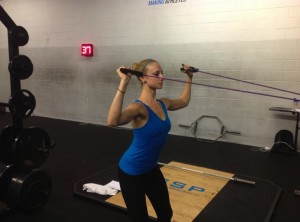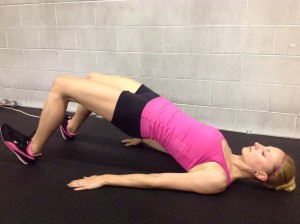By: Steve Yahns, MS, CSCS, NASM-PESAssistant Director of Performance, Lead Methodology EducatorSpectrum Sports PerformanceVolleyball Specific Exercise, Series 1
For most volleyball players, this part of the year is when school teams are in season, practices take place for multiple hours everyday, and the body starts showing in-season wear and tear throughout the shoulders, knees, ankles, and many other areas of the body. It is no doubt a very physically demanding sport on the before mentioned areas, it is also a sport full of many common injuries. From sprained ankles, to back pain, to shoulder impingements, to acl tears, off-season, pre-season, and in-season training is of upmost importance to reduce the risk of injuries and, ultimately, improve on-court performance. Throughout this two month blog series, we will talk about several exercises that will help volley ballers become more flexible, balanced, agile, and powerful.
#1: Core/Corrective:
When we think about programming workouts for volleyball players, it’s very important to think about the specific demands of the sport. It is a sport of patterning, meaning that players are commonly put in similar positions throughout a game. Most players begin every point in a hunched over, base position, and most hitters are violently swinging at the ball as they go for a kill, which can happen hundreds of times throughout a game or tournament. Over-patterning of these positions can slightly alter a players posture, which can results in a muscular imbalance. For instance, a muscle on one side of the body may become overly-tight or shortened, and the muscle on the opposite of the body may become overly-lengthened. This can be an accident waiting to happen, especially when we talk about muscles near a players knee, shoulder, ankle or back.
Exercise Number One: Band Rotator Cuff External Rotation
 Through over patterning of hitting the anterior side of a players upper body can become very tight and posterior side can become very weak. This imbalance can lead to shoulder impingements and possibly rotator cuff injuries. The purpose of the above exercise is to activate and strengthen the posterior muscles of the shoulder and rotator cuff, while at the same time, providing a stretch for the anterior muscles of the shoulder and chest. It is of upmost importance that the athlete maintains proper posture with knees bent, shoulder blades retracted, and core engaged. Using both repetitions and a hold in the fully rotated position can begin to both strengthen a player’s rotator cuff and improve shoulder stability.
Through over patterning of hitting the anterior side of a players upper body can become very tight and posterior side can become very weak. This imbalance can lead to shoulder impingements and possibly rotator cuff injuries. The purpose of the above exercise is to activate and strengthen the posterior muscles of the shoulder and rotator cuff, while at the same time, providing a stretch for the anterior muscles of the shoulder and chest. It is of upmost importance that the athlete maintains proper posture with knees bent, shoulder blades retracted, and core engaged. Using both repetitions and a hold in the fully rotated position can begin to both strengthen a player’s rotator cuff and improve shoulder stability.
Exercise Number Two: Glute Bridge
 Once again, through over patterning of being in a hunched over, base position while waiting for a hit or serve, a common postural distortion or muscle imbalance can take place. The anterior section of the hip or hip-flexor becomes shortened, and the posterior section of the hip, mainly the glutes, become lengthened and weak. Weak glutes can be a big reason why lower extremity injuries occur. Normal Glute activation is responsible for knee and ankle stability. Poor stability can result in a lack of lower body power, and knee and ankle injuries. Therefore, strong and active glutes are very important for athletic performance. A Glute Bridge can be a very effective way to address tight hip flexors and weakened glutes. By simply laying on your back, sucking in your belly button, flexing your glutes, and raising your hips, you can create a effective stretch throughout the anterior section of the hips while strengthening your glutes. We always make sure the athlete has created a straight line from shoulder to knee, without excessive low back arching. Once again, using both repetitions and a static hold can help fix this muscle imbalance.
Once again, through over patterning of being in a hunched over, base position while waiting for a hit or serve, a common postural distortion or muscle imbalance can take place. The anterior section of the hip or hip-flexor becomes shortened, and the posterior section of the hip, mainly the glutes, become lengthened and weak. Weak glutes can be a big reason why lower extremity injuries occur. Normal Glute activation is responsible for knee and ankle stability. Poor stability can result in a lack of lower body power, and knee and ankle injuries. Therefore, strong and active glutes are very important for athletic performance. A Glute Bridge can be a very effective way to address tight hip flexors and weakened glutes. By simply laying on your back, sucking in your belly button, flexing your glutes, and raising your hips, you can create a effective stretch throughout the anterior section of the hips while strengthening your glutes. We always make sure the athlete has created a straight line from shoulder to knee, without excessive low back arching. Once again, using both repetitions and a static hold can help fix this muscle imbalance.
Leave a Reply